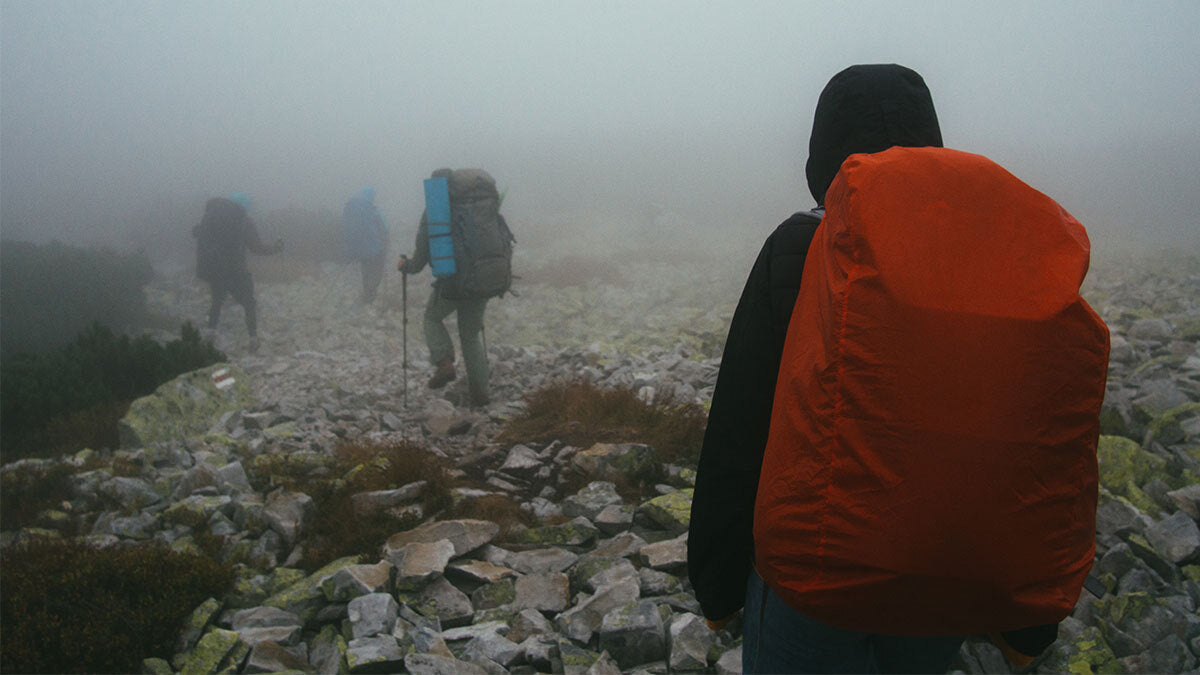The wild offers no guarantees, save for the certainty of volatile weather. This article distills complex meteorological phenomena into tactical knowledge, arming you with strategies to outmaneuver the unpredictability of thunderstorms.
Learn the tactics below and stay ahead of the storm.

1. Reading the Sky
Accurate cloud identification and understanding their development stages are critical for predicting and preparing for severe weather. Mastering these skills allows for timely decision-making, crucial for safety in unpredictable conditions.
KEY SKILLS:
- Cloud Identification – Early identification of cumulus clouds is critical. These small, puffy clouds typically form on clear, sunny days when the sun heats the ground, causing thermal uplifts. Recognizing these clouds involves understanding their growth pattern, which can quickly transition from harmless cumulus to potentially dangerous cumulonimbus clouds. Tracking this transformation involves watching for a vertical puffing up of the cloud top, which indicates the cloud is entering a more mature stage capable of producing severe weather.
- Predictive Observation – As cumulus clouds evolve into cumulonimbus, the tops may begin to spread out in the shape of an anvil. This is typically a sign that the cloud has reached the tropopause, where the temperature inversion suppresses further rise. The anvil shape indicates that the storm is entering a phase where it can start producing lightning, hail, or high winds. The ability to predict when a storm will develop from watching these cloud transformations is a valuable skill for ensuring adequate preparation and safety.
ACTION STEPS:
- Preemptive Planning – As soon as you notice clouds transitioning into the cumulonimbus phase, it's time to consider moving to safety. Initiating movement to higher ground can be advantageous if it provides a clearer view of the surrounding area without increasing your risk of lightning exposure. Alternatively, moving towards a pre-designated safe shelter, especially one that you have identified on previous excursions in the same area, can help you avoid being caught in severe weather.
- Equipment Use – Keeping a pair of high-quality binoculars handy is essential for effective cloud watching. They can help you see the finer details in cloud formation, especially at the upper levels where significant changes indicate storm development. Using binoculars to monitor the sky every 15-30 minutes can be crucial in areas known for rapid weather changes.

2. Detecting Gust Fronts and Microbursts
Recognizing gust fronts and microbursts is essential for anticipating sudden weather changes. These phenomena can precede severe conditions, and identifying them early can be the difference between safety and exposure to dangerous elements.
KEY SKILLS:
- Wind Pattern Recognition – Learning to recognize changes in wind patterns can be lifesaving. Gust fronts precede the core of the storm, bringing rapid changes in wind direction and temperature. Microbursts, though more challenging to predict, result in localized columns of rapidly descending air and can be devastating. Recognizing the signs of a microburst involves noting the sudden cooling of the air and an increase in wind speed, particularly after a period of heavy rainfall.
- Microburst Identification – Being aware of the environment during a storm is crucial; signs such as a sudden intense downdraft of cool air or a dramatic horizontal spread of low-level clouds can indicate a microburst. These phenomena are particularly dangerous due to their intensity and the short notice of their occurrence.
ACTION STEPS:
- Immediate Response – If you detect signs of a gust front, it's essential to secure loose items that could become projectiles and find shelter. Microbursts require quick thinking; if you observe any signs, seeking shelter in a sturdy building or a depression in the terrain can provide some protection from the violent downdrafts.
- DIY Anemometer Creation – Building a basic anemometer can help in detecting wind speed changes. This can be done using simple materials like plastic cups and a dowel. Place this homemade device in an open area to monitor real-time wind speeds. A sudden spike in the readings can indicate an approaching microburst, prompting immediate preventive actions.

3. Adapting to Terrain
Effective use of terrain is vital for finding shelter and enhancing survival prospects in severe weather. Knowledge of the landscape helps mitigate the dangers of lightning and flooding, ensuring safer navigation through hazardous environments.
KEY SKILLS:
- Natural Shelter Identification – Understanding how to utilize the terrain effectively is crucial for natural shelter. Identifying features such as overhangs, rock outcrops, or densely wooded areas can provide necessary shelter from wind and precipitation. Being able to quickly locate these features in your surroundings can significantly enhance your ability to stay safe.
- Flash Flood Awareness – While seeking low ground like ravines for shelter from lightning is a common tactic, these areas pose a risk of flash flooding. It's important to recognize the signs of water build-up or soil saturation around you, as these can precede flash flooding.
ACTION STEPS:
- Escape Route Planning – Always plan multiple escape routes when you're exploring or settling in a new area. This planning should involve identifying safe paths that lead to higher ground away from the risk of flooding but also offer protection from the elements.
- Map Reconnaissance – Regularly updating and reviewing digital or paper maps of your area is essential. Highlight potential shelters and risky areas, and familiarize yourself with the terrain features by visiting them in less severe weather conditions to understand their potential as shelters during storms.
Related Read: Navigating Your World Without GPS

4. Minimizing Risk from Lightning
Lightning poses one of the most direct natural threats in open areas. Developing strategies to minimize exposure and understanding safety postures can significantly reduce the risks associated with electrical storms.
KEY SKILLS:
- Safety Posture Training – Practicing the "lightning crouch" can reduce the chances of being struck directly by lightning. This involves squatting low to the ground on the balls of your feet, keeping your head down, and covering your ears with your hands to minimize your profile and contact with the ground. This position reduces the length of any potential pathway for a lightning strike through your body.
- Insulative Protection Strategies – Understanding the materials that provide insulation from electrical currents can further minimize risk. Materials like rubber and certain plastics can act as insulators and should be integrated into your gear and clothing.
ACTION STEPS:
- Positioning Practice – Conduct regular drills to enter the lightning crouch quickly from various standing, sitting, or moving positions. These drills can help you become more adept at rapidly adopting the position when a storm suddenly develops.
- Material Choice and Usage – Select clothing and gear that incorporate non-conductive materials. For instance, wearing rubber-soled shoes can provide an extra layer of protection against ground currents. Similarly, ensuring that any gear you carry, such as backpacks or tools, does not include conductive metals can reduce the risk during a storm.
With these tips, you'll be ready to handle severe thunderstorms in the wilderness. Study up and stay safe in tough weather.


1 comment
Excellent article in an area that is often neglected!!